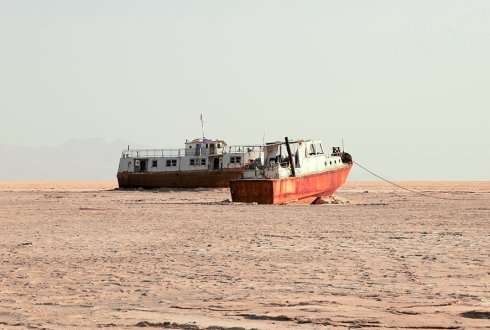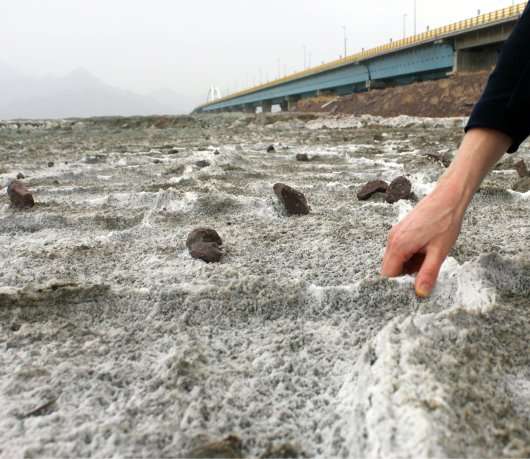Climate change threatens already volatile Urmia Lake

Climate change is likely to worsen the situation of the largely drought-stricken hypersaline Urmia Lake in Iran. Even in the most optimistic climate change scenario and without any further human impact. This is shown by Wageningen University researchers in a study published by the Science of The Total Environment journal on 15 April.
Lowest recorded level
The surface area of Urmia Lake has declined by 80% to the lowest recorded level over the last two decades. As a result, the salinity of the lake has sharply increased. This is disturbing the ecosystems, local agriculture and livelihoods, regional health, as well as tourism. The socio-environmental consequences are similar or even larger than those of the Aral Sea disaster. Thousands of people around the lake have already abandoned the area. It has been estimated that people living within 500 km2 of the lake's location are at risk, which could amplify economic, political and ethnic tensions in this already volatile region.
The lake is drying out because of a combination of factors. Over the past decades, agricultural area has tripled. This resulted in a high irrigation water demand, surface flow diversions and groundwater extraction. Efficient water management stayed behind. During the same period, a significant decrease in precipitation and an increasing trend in average maximum temperature took place.

Restoration plan
A new water management plan to rescue the lake has been proposed, entailing a rapid 40% decline in use of irrigation water. It replaces a former plan which intended to develop reservoirs and irrigation. However, none of these water management plans, which have large socio-economic impacts, have been assessed under future changes in climate and water availability, says Somayeh Shadkam of Wageningen University. Together with colleagues at the Water Systems and Global Change group and International Institute for Applied Systems Analysis (IIASA), she explored the impacts of water resources management plans on the inflow into Urmia Lake during the 21st century as part of her PhD-research.
First it was quantified how much flow is required to preserve Urmia Lake. Then future projections of total inflow to the lake were developed. This was done by using a hydrological model forced with different climate models' outputs from the lowest and highest climate change scenarios and different water management plans, as well as the naturalized (without irrigation and reservoirs) situation. The outcomes were compared to the estimated environmental flow requirements.
Need for action
The results show that the proposed irrigation plan can help to preserve the lake only if the future climate change will be very limited. "This means that urgent actions are needed to save the lake. It involves both regional action to limit human water use, and global action to limit greenhouse-gas concentration." The results also indicate that for the whole range of climate change scenarios, the area will have less water available in the future. "This is an important message not only for Urmia basin, but also for the wider region. Water scarcity is increasing in this area and we need to adapt," Shadkam says.
Recently, Shadkam presented the research outcomes to the committee engaged with the rescue of the Urmia Lake. The committee invited the Wageningen team to visit Iran to discuss their approach to rescue the lake and collaborate on the issue.
More information: Somayeh Shadkam et al. Preserving the world second largest hypersaline lake under future irrigation and climate change, Science of The Total Environment (2016). DOI: 10.1016/j.scitotenv.2016.03.190
Journal information: Science of the Total Environment
Provided by Wageningen University

















